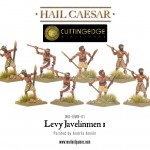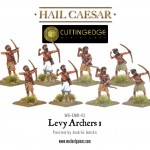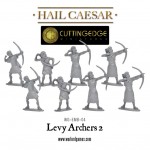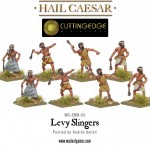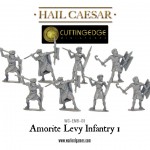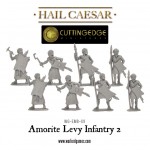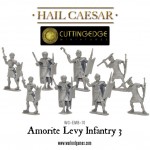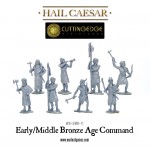The fertile lands of Mesopotamia, the coastal Levant, and Egypt were surrounded and partly separated by arid semi-desert or dry steppe regions. These included the Syrian Desert and the northern portion of the Arabian Peninsula. Over thousands of years these marginal lands were always the first to be affected by cyclical periods of wet or dry climate. These same climatic cycles also had an impact upon the civilisations of Sumer, Egypt and the Levant (the eastern coast of the Mediterranean), occasionally affecting harvests and leading to starvation, disease and political instability. However, these changes were even more devastating in marginal and mostly arid regions, such as the lands west of the Euphrates – which the Sumerians called the Martu lands. In Sumerian records the Martu lands included not only the Syrian Desert, but also the whole of Canaan, regions which the scribes populated with wandering tribes opf nomadic herders. The Egyptians referred to these desert dwellers as Aamu, whilst the Akkadians called them Amarru, and – thanks to the bible – they are known to us as Amorites. The Amorites were numerous and, when they first appear in the historical record, they are associated with the mountainous region of Jebel Bishri in Syria – known as the Mountain of the Amorites.
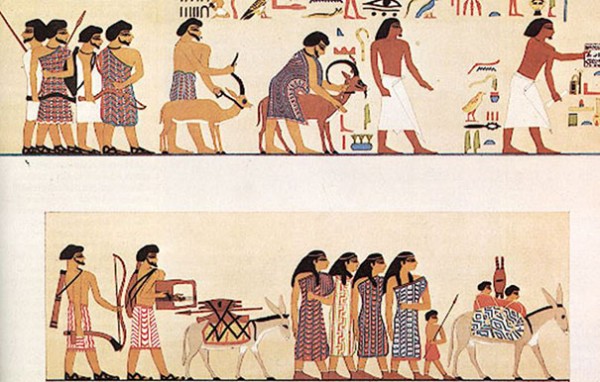
This Egyptian tomb painting is from about 1900BC and shows a group of Amorites – the hieroglyphs above the figures leading the ibex/goats identify them as Aamu. Note the contrast between the bearded Amorites and their multi-coloured clothing and the Egyptian leading them. In the bottom register we see women, children and what could be a mobile forge carried by a donkey. Tomb of Khnumhotep at Beni Hassan 12th Dynasty.
The Amorites were a perpetual nuisance in Mesopotamia where tempting pasture was relatively abundant. During times of hardship the Amorites would try to move eastward and take over territories that were at least nominally part of Akkadia or Sumeria. Akkadian and Sumerian Kings would often try and drive these nomads away, even going as far as to erect a wall between the Tigris and Euphrates to keep them out, but it was to little avail. Eventually the Amorites settled within Mesopotamia, and following the fall of the Akkadian Empire they set-up their own Kingdoms or took over many of the old Akkadian and Sumerian settlements. Ironically, these assimilated Amorites subsequently suffered the same problems from nomadic Amorites that had afflicted the Akkadians, which just goes to show that the Amorites were not really a nation but disparate groups of tribes and nomadic communities.
Warfare was undoubtedly endemic amongst these tribes, as is the case in all societies that lack central government or a sense of unifying political identity. But they were tough warriors, probably naturally inured to hardship because of their life-style, and ready to take what they needed from others in order to survive. They appear as mercenaries or subject troops in Akkadian and Sumerian armies, for example, and as raiders and bandits in their own right. During the early second millennium BC new names appear that described nomadic groups or desert raiders – and these would have been essentially similar in appearance to the earlier Amorites. Amongst them are wandering bands of Habiru – who plagued the Levant region and Egypt – and Arabian tribes such as those known as Shasu in later Bronze Age Egyptian records.
Our Desert Nomads range represents the fighting forces of these early Amorite raiders, mercenaries and tribute troops – and are ideal for representing any of the culturally comparable nomads from the entire region including early Arabs and Habiru.
These figures can be used to build armies of the ‘Donkey-Nomad’ or early Bedouin tribes of the Arabian Desert and Dry-Steppe regions surrounding Mesopotamia, Canaan and Syria during the Early and Middle Bronze Age. In Mesopotamia they were known variously, by the Sumerians as Martu, by the Akkadians as Amurru and by Neo-Sumerians as Tidnumites. They are more popularly known from the Bible as Amorites. They gradually assimilated with, and ultimately overran, the City-States of Mesopotamia and Syria at the beginning of the Middle Bronze Age. However, many of the tribes still remained nomadic and continued to war with, or ally with, the susequently settled Amorite City-States.
They were also enemies of Old and Middle Kingdom Egypt, where they were known variously as Aamu, ‘Asiatics, ‘Sand-Dwellers’ or ‘Easteners’. It is also widely believed that the Hyksos or ‘foreign rulers’, who invaded Egypt at the end of the Middle Bronze Age, were Amorites. Hence, Hyksos armies can be built using figures from this range, combined with figures from the Amorite Kingdoms range.
The Shieldless Javelinmen, Archers and Slingers can be used for later Bedouin Nomad sub-groups such as the Hanu and Sutu, who would have dressed simliarly, as would the Habiru/Apiru (possibly early Hebrews).
However, figures for the Nomadic tribes and Early Hebrews of the Late Bronze Age will form a later separate range. The ‘Camel-Nomad’ tribes of the Later Aramaeans, Midianites, Amalekites and early or proto-Arabs will form another range within the future Iron Age section.
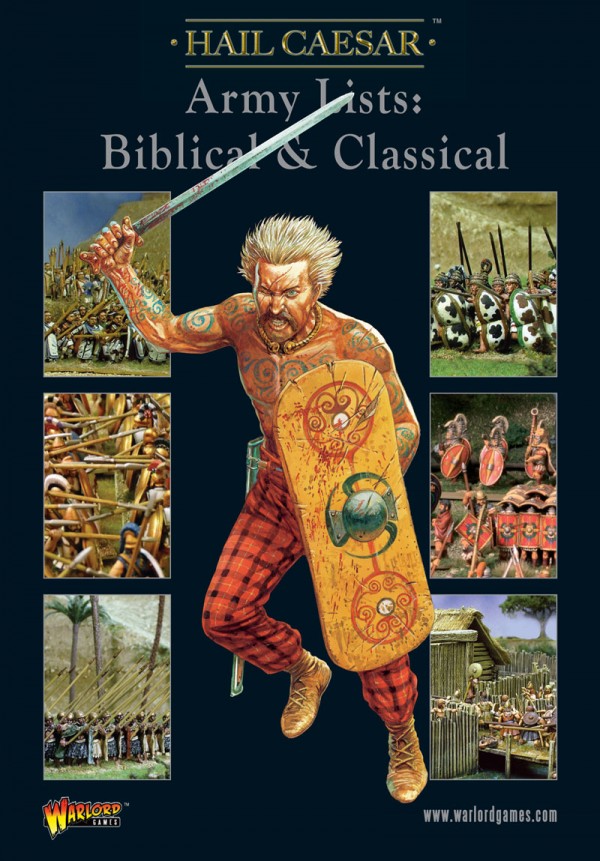
In the Hail Caesar game they appear in many of the army lists from Hail Caesar Biblical Armies including: Akkad and Sumer, Early Arab Raiders (which also includes Habiru), Amorite Babylonia (which can be used to represent any of the Amorite Kingdoms), Canaanites (which includes Habiru as mercenaries), Hittites (which again includes Habiru as mercenaries) and Mitanni (Habiru again).

